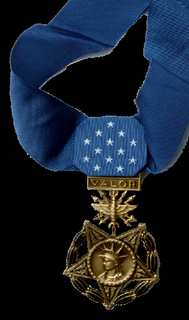Irish Born Congressional Medal of Honor Recipients
 The Medal of Honor Grove at Valley Forge has the names of Medal of Honor recipients by the state they resided in on Granite Obelisks in a large half circle.
The Medal of Honor Grove at Valley Forge has the names of Medal of Honor recipients by the state they resided in on Granite Obelisks in a large half circle.When Joe Roche was National AOH President in 1982-1984, placed a Granite Obelisk there that was carved in Ireland.
That Obelisk bears the names of those Medal of Honor Recipients who were born in Ireland and thus had no state obelisk upon which to place their names, many died while serving in the military. The Sister who was the administrator of the Medal of Honor Grove at the time requested this obelisk from Ireland and the AOH provided it for these Irish immigrants. The names of other recipients who were immigrants and thus had no state, are on the other three sides of the monument. The Irish recipients are more than all the others combined.
The following are only five stories of bravery and courage from the Irish-born Medal of Honor recipients (for a complete list click here):
Landsman Thomas E. Corcoran, USN
Irish-born Landsman Thomas E. Corcoran served on board the U.S.S. Cincinnati, an ironclad river gunboat, during the Civil War siege and attack on the Vicksburg, Tennessee batteries.Engaging the enemy in a fierce battle on May 15, 1863, the Cincinnati, amidst an incessant fire of shot and shell, continued to fire her guns to the last, though so penetrated by shellfire that her fate was sealed.
The Cincinnati was eventually sunk by shellfire.Serving bravely during this action, Landsman Corcoran was conspicuously cool under the fire of the enemy, never ceasing to fight until his proud ship went down, "her colors nailed to the mast." In the chaos that followed the sinking, Landsman Corcoran succeeded in rescuing several of his fellow shipmates from drowning.
Colonel Bernard J. D. Irwin, USA.
The earliest military action to be recognized with a Medal of Honor was awarded to Irish-born Colonel Bernard J. D. Irwin of the United States Army. Doctor Irwin was serving as the Assistant Surgeon at Fort Buchanan in Arizona Territory during the US-Apache conflict in 1861.
He volunteered to lead the rescue of 2nd Lieutenant George Bascome who was trapped with 60 men of the U.S. 7th Infantry by the Chiricahua Apaches under Cochise.Irwin and 14 men left Fort Buchanan, riding mules, on the 100-mile journey to rescue Bascom's forces at Apache Pass. After fighting and capturing Apaches along the way and recovering stolen horses and cattle, they reached Bascom's forces on February 14, 1861 and Irwin proved instrumental in breaking the siege and rescuing Bascome and his men.
Although Irwin's bravery in this conflict was the earliest Medal of Honor action, the award itself was not created until 1862, and it was not until January 24, 1894 that Irwin received the nation's highest military honor.
Seaman Hugh Molloy, USN
Irish-born Ordinary Seaman Hugh Molloy served on board the U.S.S. Fort Hindmen during the Civil War engagement with Confederate forces near Harrisonburg, Louisiana on March 2, 1864.
Following a shell burst, which mortally wounded the first gun sponger, who dropped the sponge out of the forecastle port, Seaman Molloy jumped out of the port to the forecastle, recovered the sponge and continued to sponge and load the gun for the remainder of the fierce action.Despite his exposed position Seaman Molloy continued his efforts while risking extreme danger to his person from the constant raking fire of enemy musketry.
Major Joseph H. Thompson, USA
Irish-born Major Joseph H. Thompson was serving with the 110th Infantry, 28th Division near Apremont, France on October 1, 1918. Two regiments of the enemy counterattacked Major Thompson's battalion. Major Thompson encouraged his battalion by constantly braving the hazardous fire of machineguns and artillery. His courage was mainly responsible for the heavy repulse of the enemy.
Later in the action, when the advance of his assaulting companies was held up by fire from a hostile machinegun nest and all but one of the six assaulting tanks were disabled, Major Thompson, with great gallantry and coolness, rushed forward on foot three separate times in advance of the assaulting line, under heavy machinegun and anti-tank gun fire, and led the one remaining tank to within a few yards of the enemy machinegun nest, which succeeded in reducing it, thereby making it possible for the infantry to advance.
Captain Patrick H. White, USA
Irish-born Captain Patrick H. White was commanding the Chicago Mercantile Battery at the Battle of Vicksburg, Tennessee. On May 22, 1863 Union General A. J. Smith sought an artillery commander to take on a particularly dangerous assignment. Captain White accepted the assignment to pull a six-pound cannon down a steep hill and then up another in order to fire point blank into a rebel stronghold.
The Confederate position was staunchly defended in order to keep the Union forces from access to Hawkins Ferry Road, one of the major entrances to Vicksburg.Captain White and five of his men pushed and pulled the cannon through the ravine up to the Confederate position. They fired upon the Confederate position, which was instrumental in the taking of Vicksburg.
It should be noted that a "six-pound cannon" refers to the weight of the projectile, not the weight of the cannon. A six-pound cannon with shot would weigh about 1,000 lbs.For their heroic efforts Captain Patrick White and his five men were awarded the Medal of Honor in 1894. Captain White also has a monument in his honor at the battle site in recognition of his gallant assault. One of Captain White's men, Private Patrick McGuire, was also born in Ireland.
Go bless them all.



0 Comments:
Post a Comment
Subscribe to Post Comments [Atom]
<< Home